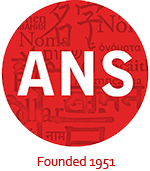While the US has been naming its storms since the 1950s, the UK only adopted the practice in 2014. Not all storms are given names – only those big enough to cause significant damage. Giving a storm a name also holds the added benefit of making it easier for people to follow the storm’s progress via news updates and social media.
 In the UK, the Met Office is responsible for selecting each storm’s name, although they have asked members of the public to make suggestions as well. The 2015 campaign called #NameOurStorms prompted more than 10,000 suggestions in its very first year, providing a diverse list of potential names.
In the UK, the Met Office is responsible for selecting each storm’s name, although they have asked members of the public to make suggestions as well. The 2015 campaign called #NameOurStorms prompted more than 10,000 suggestions in its very first year, providing a diverse list of potential names.
Suggestions are also taken from the Met Office’s Irish counterpart, Met Eireann. This year, they have also teamed up with the Dutch weather organisation, Royal Netherlands Meteorological Institute (KNMI) to provide the most eclectic list yet.
Once names have been submitted by the public, the Met Office takes the most popular entries to form a list, with one name beginning with each letter of the alphabet. They then move though the list in alphabetical order, alternating between male and female names as they go – that’s why Ciara was followed by Dennis this year. The Met Office also rejects names which are not “proper names” and these ones have been disregarded on that basis: Apocalypse, Baldrick, Big Boss, Bluetooth, Forkbeard, Gnasher, Hot Brew, Megatron, Noddy, root ripper, Stormageddon, Ssswetcaroline, Vader, Voldermort and branch wobbler.
